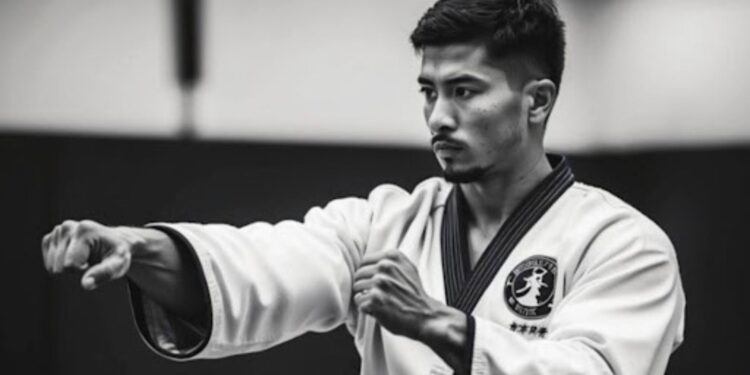Athletes in various sports can greatly enhance their performance through martial arts training. By focusing on discipline, strength, and agility, martial arts offer unique advantages that complement traditional athletic training. The combination of these skills enhances overall physical capabilities and mental toughness, which are crucial for success in any sport.
Martial arts training emphasizes balance and coordination. Athletes learn to move efficiently and effectively, reducing the risk of injury and enhancing their game performance. Additionally, martial arts teach athletes to maintain focus and remain calm under pressure, skills that are transferable to competitive sports environments.
Building endurance and flexibility is another key benefit brought by martial arts. These components are essential for athletes looking to gain an edge over their competition. The rigorous routines not only improve physical attributes but also foster a mindset of perseverance and resilience.
Physical and Mental Conditioning
Martial arts training significantly strengthens physical fitness and builds mental resilience. Athletes find improvement in various aspects like strength, agility, and concentration which are crucial across sports disciplines.
Enhanced Physical Fitness
Martial arts provide comprehensive physical benefits by focusing on core elements such as strength, flexibility, and endurance. Techniques practiced in disciplines like Taekwondo or Judo enhance cardiovascular health. Regular sparring sessions build muscular strength and improve reflexes.

Classes at a martial arts school often include warm-ups and cool-downs, promoting overall injury prevention. This holistic workout routine assists athletes in building a balance of strength and flexibility, which is valuable for reducing athletic injuries. It also contributes to faster recovery times.
Enhanced physical fitness through martial arts not only aids in achieving peak performance levels but also supports longer athletic careers. Training sessions that involve repetitive movements also increase stamina, thus helping athletes maintain energy levels during prolonged competitions.
Mental Toughness and Focus
The discipline ingrained in martial arts training fosters mental toughness and concentration. Techniques often require sustained focus, demanding precision in movements, and quick decision-making skills. This mental conditioning is beneficial for athletes under pressure.
Martial arts teachings emphasize meditation and breathing exercises, enhancing mental clarity and stress reduction. Mental resilience developed through this practice helps athletes remain composed in high-stakes situations, crucial in competitive environments.
Training at martial arts schools cultivates an athlete’s ability to stay focused on goals and face challenges head-on with a calm mind. The confidence gained through overcoming physical challenges directly contributes to improved mental stability, bridging a crucial gap for athletes striving for consistency and excellence in their respective sports.
Cross-Training Advantages
Martial arts training offers athletes in various sports unique benefits that enhance a range of physical attributes. From increased flexibility and mobility to improved strength, power, endurance, and stamina, the integration of martial arts techniques can boost overall athletic performance.
Flexibility and Mobility
Martial arts emphasize a wide range of motion, helping athletes develop flexibility and joint mobility. Techniques involve stretching and dynamic movements, which enhance the muscles’ ability to extend and contract. This can minimize injury risk during sports activities.

Practicing martial arts at a reputable school provides structured routines that target core flexibility areas, such as hips, shoulders, and legs. Improved flexibility enables athletes to perform complex movements more efficiently, translating into better execution in their primary sports.
Strength and Power
Martial arts training builds strength and power through consistent practice of techniques like strikes, kicks, and grapples. These exercises engage multiple muscle groups, promoting overall muscular development. This kind of training complements traditional weightlifting by incorporating functional, full-body workouts.
Athletes experience enhanced muscle coordination and explosive power, which can be particularly beneficial in sports requiring quick, powerful movements. A martial arts school often incorporates strength-building exercises that are both challenging and effective.
Endurance and Stamina
Training sessions in martial arts are designed to push cardiovascular limits, significantly improving an athlete’s endurance and stamina. Martial arts involve prolonged periods of high-intensity activity, which increases heart rate and boosts overall cardiovascular health.
With the mix of aerobic and anaerobic exercises, athletes learn to sustain high performance over longer periods. Engaging in regular martial arts sessions helps maintain and extend energy levels during other sports competitions, ensuring sustained activity and less fatigue.
Injury Prevention and Rehabilitation
Martial arts training offers valuable methods for athletes to minimize injuries and enhance recovery. The techniques involved emphasize resilience, flexibility, and strength, which are pivotal for both injury prevention and effective rehabilitation.
Proactive Injury Avoidance
Martial arts focus on balance and flexibility, reducing the risk of injuries. Practitioners learn to control movements, improving coordination and muscular awareness. Regular practice enhances joint stability, which is crucial in avoiding strains and sprains.
Breathing exercises are integrated regularly, promoting better oxygen flow and control. This aspect aids in reducing muscle fatigue and decreasing injury chances. Strength training involved in martial arts contributes to building muscles that can handle stress efficiently, lowering injury risks across various sports disciplines.
Recovery and Rehabilitation Techniques
Recovery in martial arts includes methods that promote healing and physical restoration. Stretching is a key component, alleviating tension and promoting mobility. Dynamic and static stretches contribute to faster recovery by preventing stiffness and increasing blood flow.
Rehabilitative techniques include strength-building and low-impact exercises. These strengthen injured areas without aggravating them further. Mindful movements and meditation support mental recovery, helping athletes manage stress and focus on recovery progress. Massage practices often used in training also play a role, aiding in the relaxation of muscles and faster injury recovery.
Strategic and Tactical Thinking
Martial arts enhance strategic and tactical thinking, which is valuable in any athletic discipline. Through disciplined practice, athletes develop the analytical skills and adaptability needed in competitive situations.
Analytical Skills Development
Training in martial arts sharpens analytical skills. Practitioners learn to assess their opponent’s strengths and weaknesses effectively. They engage in exercises that require anticipation and interpretation of movements.
These skills translate into better decision-making abilities. Athletes can quickly evaluate situations, identifying opportunities and threats during competition. Martial arts training involves constant strategic planning, encouraging athletes to think several moves ahead.
At a martial arts school, students participate in drills that refine these skills. Exposure to varied scenarios allows them to become adept at analyzing problems and formulating effective solutions. This mental discipline is as crucial as physical fitness.
Adaptability in Competition
Martial arts emphasize adaptability by preparing athletes for dynamic and unpredictable environments. While training, they face diverse techniques from various martial arts forms. This exposure ensures they remain flexible and responsive during competitions.
Athletes learn to adjust their strategies in real time. Unexpected situations no longer induce panic. Instead, they respond with calm confidence.
At each level, adaptability is reinforced by practicing against multiple opponents. This helps athletes master a range of techniques, broadening their competitive skill set. Martial artists develop the ability to modify their approaches, which is a critical asset in any sport.
The curriculum in a martial arts school often includes sparring with different partners, fostering an environment where adaptability becomes second nature. They learn to pivot strategies seamlessly, enhancing their ability to perform under pressure.






